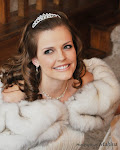This past week has been a busy week for night sky observations.
 On Thursday evening, we had dinner in stages. After the salad, we went outside and looked up to see the International Space Station (ISS) transit across from the northwest to the southeast, crossing the bowl of the Big Dipper--which was barely visible because the sun had set only about 15 minutes before. Then we began the main course, but before I served seconds, we were outside again, to see the Space Shuttle seeming to chase after the ISS from northwest to southeast. It went right through the handle of the Big Dipper on its way towards the rising moon.
On Thursday evening, we had dinner in stages. After the salad, we went outside and looked up to see the International Space Station (ISS) transit across from the northwest to the southeast, crossing the bowl of the Big Dipper--which was barely visible because the sun had set only about 15 minutes before. Then we began the main course, but before I served seconds, we were outside again, to see the Space Shuttle seeming to chase after the ISS from northwest to southeast. It went right through the handle of the Big Dipper on its way towards the rising moon. And, speaking of the moon, did you notice how bright it was this past week? The fullness of the Hunter Moon was also at the Moon's Perigee, that time when its orbit brings it closest to the earth. It was so amazingly bright last week that when it began to shine through the clerestory in our bedroom, it woke me up early in the morning. I looked out the French doors to see the full moon casting dark shadows of trees and shrubs before it as it sank to the western horizon. I even managed a picture of it. It is a little blurred as I do not have tripod. You can see the deep shadow of the mountains it will sink behind at the bottom of the picture. The next morning, N. complained that the moonlight kept him awake as it shined in his window. We talked about orbits and perigee and apogee, and looked it all up at APOD (Astronomy Picture of the Day).
 Another amazing astronomical event this week is that Comet P17 Holmes, which was very dim when it passed us on its way toward the sun last spring, suddenly flared into brightness this weekend.
Another amazing astronomical event this week is that Comet P17 Holmes, which was very dim when it passed us on its way toward the sun last spring, suddenly flared into brightness this weekend. We looked for it on Friday night. In a sort of strange turn of events, I identified it first, whereas Bruce thought I was pointing to a star. Although he's the astronomer, in this case, I thought this object looked fuzzy, whereas a star would twinkle. The full moon made it difficult to see, but with binoculars steadied against the roof of Henry, we were even able to see a little tail. We looked for it again last night, and since the moon rose late, we actually saw a pretty good tail on it!
P17 Holmes is so bright because it is outgassing as it passes Jupiter. It is currently about 2.5 AU (that 2.5 x the distance from the earth to the sun) and is moving away from the sun now. It is a naked-eye object. It can be seen by identifying Cassiopia (the 'W' shaped constellation in the northern sky) and then looking east from there to find a triangle of stars. It is a point at the bottom of the triangle, and it looks fuzzy and does not twinkle like a star.
 The picture of the comet above is from APOD. A friend of ours from TAAS (The Albuquerque Astronomical Society) also took a picture the other night, which includes the stars around it that can be seen at her blog Infinity. If you check her site out, you will see where to look for Comet P17 Holmes. Finally, NASA has schedules for when and where to look to see the ISS pass overhead, as well as where to look for the Space Shuttle when it is up.
The picture of the comet above is from APOD. A friend of ours from TAAS (The Albuquerque Astronomical Society) also took a picture the other night, which includes the stars around it that can be seen at her blog Infinity. If you check her site out, you will see where to look for Comet P17 Holmes. Finally, NASA has schedules for when and where to look to see the ISS pass overhead, as well as where to look for the Space Shuttle when it is up. It's interesting. Every time Bruce comes home with a schedule for viewing the ISS or the Shuttle or some other event that happens regularly, I think to myself, "Been there. Done that. Got the T-shirt." But then I always go out to see it. And it always amazes me. People are up there in space! I guess I am a space-junkie, even if I try to pretend I am jaded and experienced. I'll never get over the initial wonder.
Do take some time to go out and take a look at the night sky soon. The moon is now waning, so you will be able to see the comet well in the early evening. Check out the schedule for seeing the ISS and the Space Shuttle when it undocks. We all need a little wonder.
And as we say in the astronomy community:
Clear Skies!















4 comments:
What an exciting week! :-)
I haven't had much time to look at the night sky recently, but that moon was amazing. It bathed our sunroom in light and my son said it was like daytime.
Neat stuff! Travis had me looking at the sky last night to admire the huge yellow moon. I thought it was stars that twinkled, but couldn't remember for sure, so thanks!
Very cool! We did see it (and found it with our teeny telescope) after you mentioned it the other night. Thanks for the reminder!
I sometimes get busy and involved with the details of life -- and with little people we rarely are out in the dark -- it is good to get a little reminder to go outside, look up, and enjoy.
Post a Comment